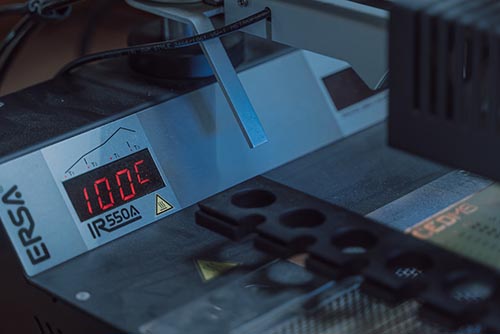+86-591-83859705
Views: 193 Author: Site Editor Publish Time: 2020-11-28 Origin: Site
Weighing is one of the most common tasks in laboratories. Advanced micro balances, semi-micro balances, analytical balances, and precision balances have been greatly optimized so that there is no need to set up a dedicated weighing room. Advances in electronic technology have greatly simplified the operation of the balance, greatly shortened the weighing time, and made the balance so flexible that it can be directly integrated into the production process. According to different applicable situations, we divide the balance into different categories. What is the difference between them?

Electronic balance, a newly developed type of balance, is one of commonly used weighing instruments in chemical laboratories. It has the advantages of quick weighing and easy use. There are two main styles currently in use: top-loading and bottom-loading. The weighing principles of electronic balances mainly include electromagnetic balance and resistance strain. The former is measured by the electromagnetic balance principle, while the latter is measured by the Wheatstone bridge principle caused by the deformation of the resistance wire. Electronic analytical balances are a type of electronic balances, with a reading accuracy of 0.1mg. Usually, the electronic analytical balance is surrounded by a windshield to ensure accuracy.
How should we use electronic balances correctly? First of all, we need to close the side door of the balance, and lightly press the tare button on the top plate, then the flashing 0.0000g appears on the electronic display. When the number is stable, it means the balance has stabilized and enters the state of preparing for weighing. In the second step, we need to open the side door of the balance, put the container or paper containing the chemical sample on the tray, and then close the side door of the balance. After the number on the electronic display stabilizes, we can read the number, which is the weighing value of the sample. Finally, we need to open the side door of the balance, taking out the sample, closing the side door of the balance, and reset the number to zero.
A digital weighing balance is a device that can measure the weight of any object, also known as a weight scale. The weight scale mainly records and monitors the weight change of the human body in clinical practice. It is divided into electronic and mechanical types. The weight scale is practical and convenient, and at the same time, it has a wide range of applications. The function of the weight scale is mainly manifested in its essential purpose. It can not only accurately weigh the body weight, but also reflect the weight control situation of a certain period of time through daily weight changes. Digital personal weighing scale is the basis of health management. Admittedly, it is best to have a weight scale at home to grasp the weight of the whole family,which is a very important item to ensure the health of the whole family.

These are special types of scales that can accurately measure the weight of objects. The accuracy is so high that even one milligram of weight can be measured with precision digital scales.
Laboratory balances, like its name, are especially used in laboratories. They have different functions and characteristics. They are mainly used to measure the weight of chemicals and samples.
Electronic analytical balances are used to measure tiny objects that are usually weighed in the sub-millimeter range. Most life science laboratories require analytical digital balances for accurate weighing. Analytical balances should only be used by trained personnel and require regular calibration and maintenance. Therefore, they are usually set in a separate internal room of the laboratory without chemical spills, flying objects, vibrations, and other disturbances. In addition, locking rooms can prevent analytical balances from using by well-intentioned but untrained visitors.
The key to purchasing a balance is to meet the accuracy requirements of the laboratory. After that, the user decides other important factors such as built-in applications, protection from external influences, corrosion protection, user safety, cross-contamination risk, long service life, spare parts warranty, and service. Scientists with limited budgets may choose to make concessions in certain areas and should also consider the price/performance ratio and return on investment.